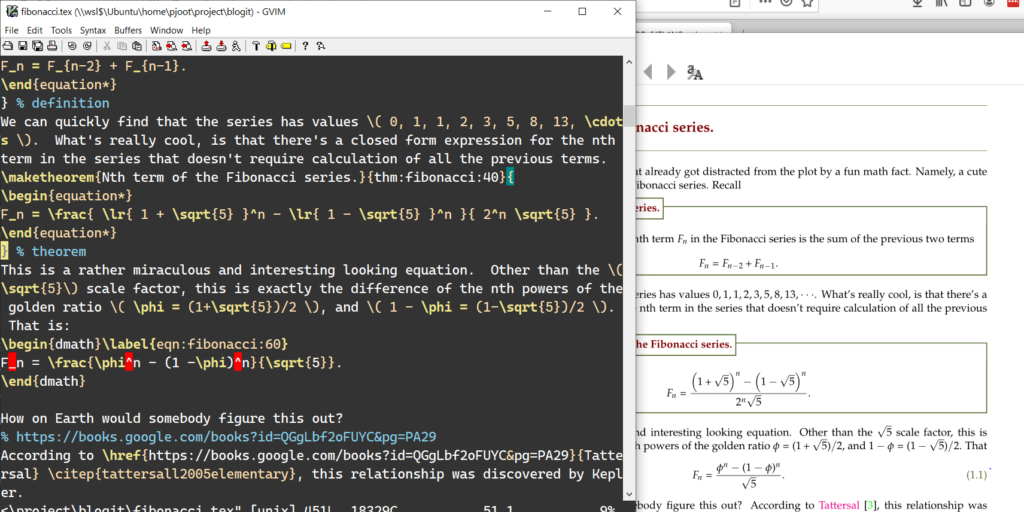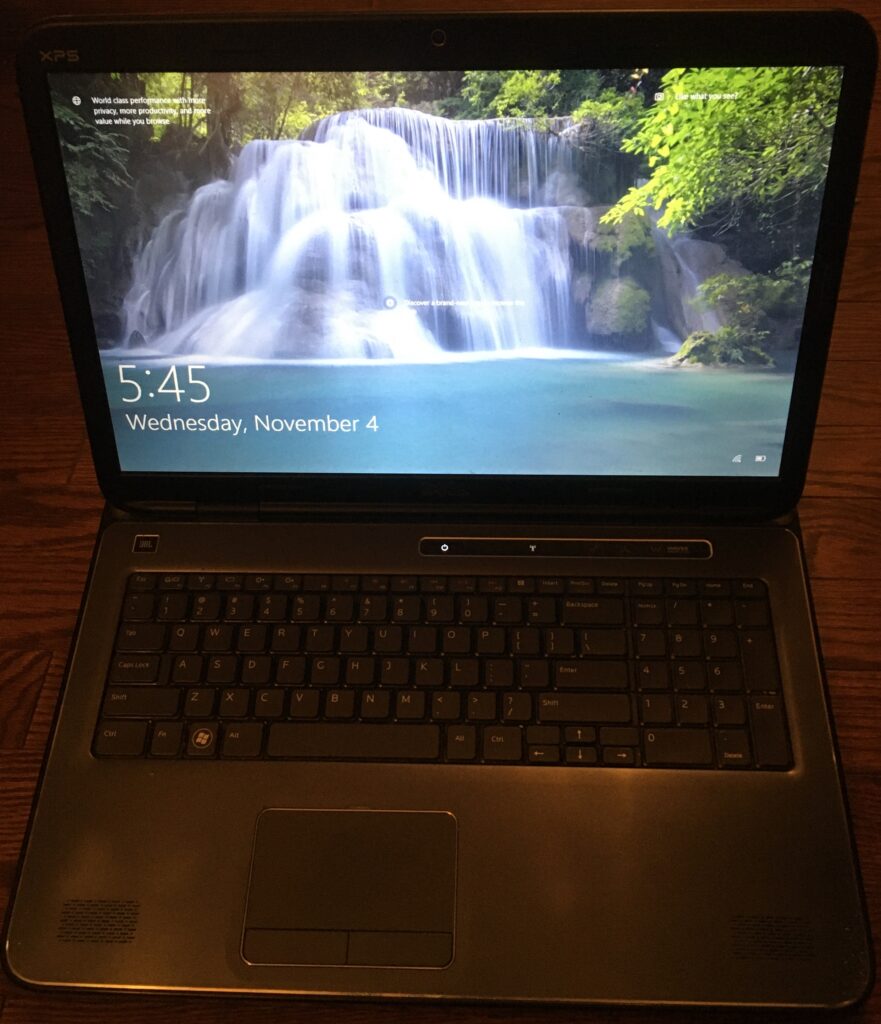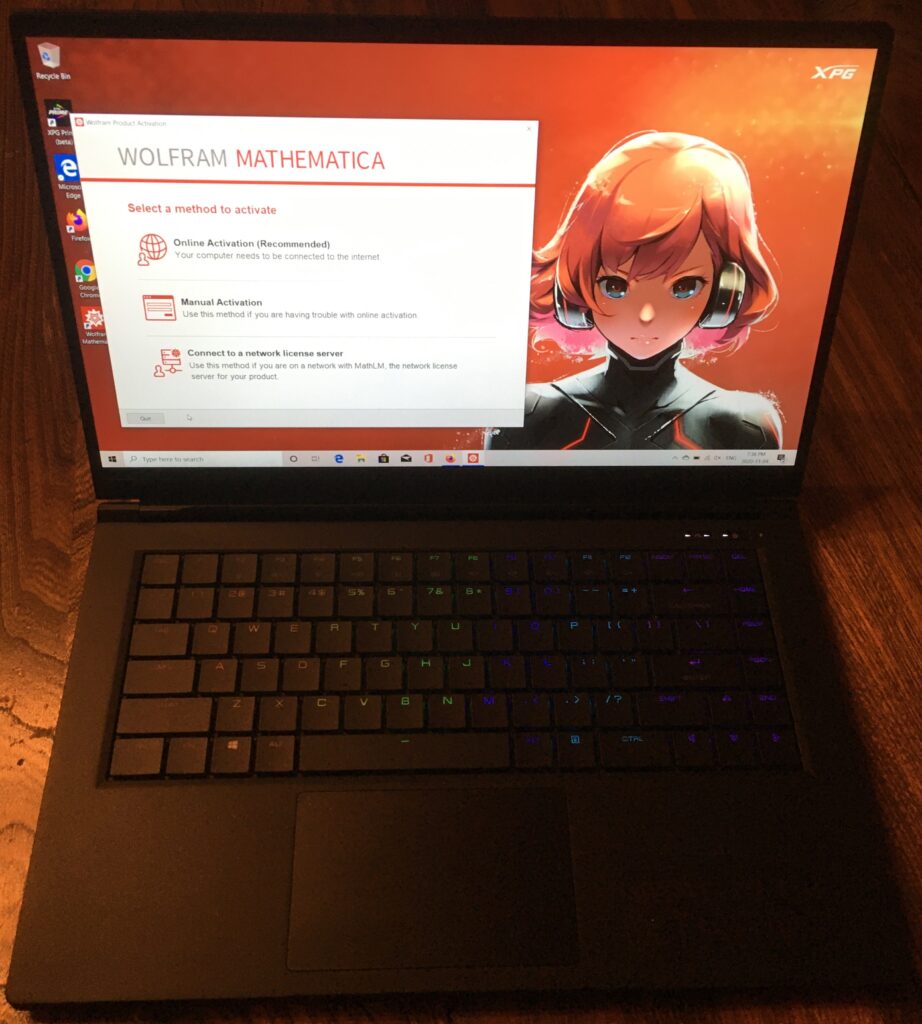I’ve now installed enough that my new Windows machine is minimally functional (LaTex, Linux, and Mathematica), with enough installed that I can compile any of my latex based books, or standalone content for blog posts. My list of installed extras includes:
- Brother HL-2170W (printer driver)
- Windows Terminal
- GPL Ghostscript (for MaTeX, latex labels in Mathematica figures.)
- Wolfram Mathematica
- Firefox
- Chrome
- Visual Studio
- Python
- Julia
- Adobe Acrobat Reader
- Discord
- OBS Studio
- MikTeX
- SumatraPDF
- GVim
- Git
- PowerShell (7)
- Ubuntu
- Dropbox
Some notes:
- On Windows, for my LaTeX work, I used to use MikTex + cygwin. The cygwin dependency was for my makefile dependencies (gnu-make+perl). With this new machine, I tried WSL2. I’m running my bash shells within the new Windows Terminal, which is far superior to the old cmd.
- Putty is no longer required. Windows Terminal does the job very nicely. It does terminal emulation well enough that I can even ssh into a Linux machine and use screen within my Linux session, and my .screenrc just works. Very nice.
- SumatraPDF is for latex reverse tex lookup. i.e. I can double click on pdf content, and up pops the editor with the latex file. Last time I used Sumatra, I had to configure it to use GVim (notepad used to be the default I think.) Now it seems to be the default (to my suprise.)
- I will probably uninstall Git, as it seems superfluous given all the repos I want to access are cloned within my bash file system.
- I used to use GVim extensively on Windows, but most of my editing has been in vim in the bash shell. I expect I’ll now only use it for reverse tex (–synctex) lookup editing.
WSL2 has very impressive integration. A really nice demo of that was access of synctex lookup. Here’s a screenshot that shows it in action:
I invoked the windows pdf viewer within a bash shell in the Ubuntu VM, using the following:
pjoot@DESKTOP-6J7L1NS:~/project/blogit$ alias pdfview alias pdfview='/mnt/c/Users/peete/AppData/Local/SumatraPDF/SumatraPDF.exe' pjoot@DESKTOP-6J7L1NS:~/project/blogit$ pdfview fibonacci.pdf
The Ubuntu filesystem directory has the fibonacci.synctex.gz reverse lookup index that Summatra is able to read. Note that this file, after unzipping, has only Linux paths (/home/pjoot/…), but Summatra is able to use those without any trouble, and pops up the (Windows executable) editor on the files after I double click on the file. This sequence is pretty convoluted:
- Linux bash ->
- invoke Windows pdf viewer ->
- that program reading Linux files ->
- it invokes a windows editor (presumably using the Linux path), and that editor magically knows the path to the Linux file that it has to edit.
Check out the very upper corner of that GVim window, where it shows the \\wsl$\Ubuntu\home\pjoot\project\blogit\fibonacci.tex path
As well as full Linux access to the Windows filesystem, we have full Windows access to the Linux filesystem.
Not all applications know how to access files with UNC paths (for example, the old crappy cmd.exe cannot), but so far all the ones I have cared about have been able to do so.



